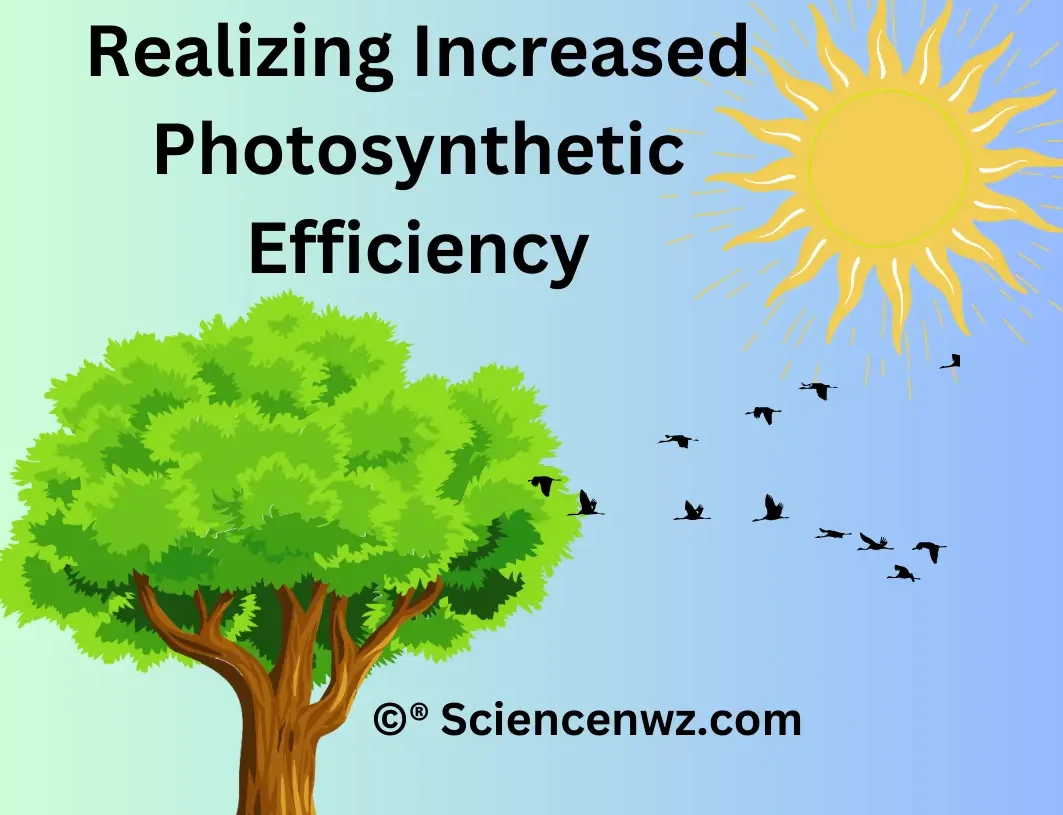Realizing Increased Photosynthetic Efficiency : A Brief Idea
“Realizing Increased Photosynthetic Efficiency” is all about giving plants a power-up in their natural energy-making process. It’s like giving them a special boost to grow faster and make more food. Scientists are working hard to find clever ways to help plants do this. They’re exploring things like changing plant genes, tweaking the tiny parts inside plants, and even using special coatings to make them better at turning sunlight into energy. Imagine it like upgrading a car’s engine to make it run faster and more efficiently. If we succeed, it could mean more food for everyone and help us deal with food shortages in the future. So, it’s an exciting area of science that holds a lot of promise for a greener and more plentiful world.
Application of Far Red Light for Optimal Growth of Plants
Scientists have found that a special kind of light called ‘far-red light’ can really help plants grow better. Controlling this light in a greenhouse has some neat benefits:
Making Leaves Bigger
Far-red light makes leaves larger, which is super helpful for plants like lettuce, spinach, and basil.
Helping Plants Grow Faster
For certain plants like chrysanthemums, far-red light can speed up the time it takes for them to be ready to harvest.
Deciding When Plants Bloom
We can use far-red light to either make plants flower or stop them from flowering.
Read Also : Cyborg Technology
Cyborg Technology
We usually measure the light plants use for growing (photosynthesis) with something called a PAR sensor. But now, we have a new sensor that can also measure far-red light. Combining these measurements gives us a better understanding of how plants grow. It even helps us figure out how much of each type of light a plant needs.
For people who grow plants in greenhouses, knowing about far-red light is really important. It helps them make sure their plants
.
Turbo Charged Photosynthesis
Turbo charged photosynthesis is like giving plants a superpower to make food faster. It’s a way scientists are trying to help plants grow more efficiently by boosting their natural process of turning sunlight, water, and air into energy. This could potentially lead to increased crop yields and help address food shortages in the future.
Advantages of Turbo Charged Photosynthesis in Agriculture
Turbo-charged photosynthesis, with its potential to significantly enhance plant growth and productivity, holds immense promise for agriculture. Firstly, it could lead to substantially increased crop yields. This means that farmers could grow more food on the same amount of land, helping to meet the growing demands of a global population. Additionally, it might allow crops to thrive in less-than-ideal conditions, like regions with limited water or nutrient resources. This resilience is crucial for ensuring food security in areas prone to droughts or poor soil quality.
Read Also : Forensic Anthropology
Unboxing the Secrets of Forensic Anthropology
Furthermore, turbo-charged photosynthesis could contribute to sustainable farming practices. By optimizing the plants’ natural ability to convert sunlight, water, and carbon dioxide into energy, we can reduce the need for synthetic fertilizers and other chemical inputs. This, in turn, helps mitigate environmental impacts and reduces costs for farmers. Moreover, improved photosynthesis could also play a role in combating climate change. Plants act as natural carbon sinks, absorbing CO2 from the atmosphere. If they become more efficient at this process, they could help offset carbon emissions, contributing to efforts to stabilize our climate.
Overall, the benefits of turbo-charged photosynthesis extend far beyond the agricultural sector. It offers a promising pathway towards a more sustainable and food-secure future, with positive implications for both farmers and the broader global community.
Other Ways of Increasing Photosynthetic Efficiency
There are several ways scientists are exploring to increase photosynthetic efficiency:
Genetic Engineering
Researchers are working on modifying the genes of plants to enhance their photosynthesis process.
Biochemical Tweaks
Scientists are studying how to improve the enzymes and molecules involved in photosynthesis to make them work better.
Changing Leaf Structure
Some studies are looking at altering the shape and structure of leaves to capture more sunlight and carbon dioxide.
Using Specialized Bacteria
Introducing specific bacteria to plant roots can help enhance their ability to absorb nutrients, which in turn can improve photosynthesis.
Nano-materials and Coatings
Developing special coatings or using tiny materials (nanoparticles) that can enhance light absorption and make photosynthesis more efficient.
Artificial Photosynthesis
Creating synthetic systems that mimic the process of photosynthesis, potentially making it more efficient and controllable.
Advanced Breeding Techniques
Traditional breeding methods are also being used to select and cross plants with naturally higher photosynthetic rates.
Most of these methods are still being researched and might take time before they become widely used.

4 thoughts on “How to Increase Photosynthetic Efficiency”